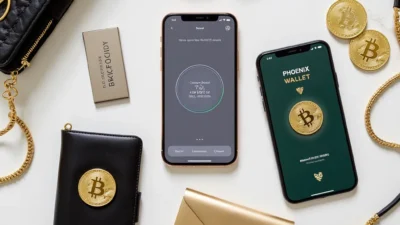What the Bank of America Bitcoin Report Really Means
When Bank of America speaks, Wall Street listens. But this time, Bitcoin holders are leaning in too.
The July 2025 Bank of America Bitcoin report confirmed what many of us already knew:
Crypto isn’t just here to stay—it’s becoming a core part of institutional finance.
But don’t just skim the headlines. Let’s break down what’s really going on between the lines—and what it means for where Bitcoin goes next.
1. Institutional Adoption Isn’t Coming. It’s Here.
The report cites a 280% YoY increase in institutional Bitcoin inflows via ETFs and custodial products.
Translation: banks, hedge funds, and pension funds are no longer on the sidelines—they’re allocating now.
“Bitcoin exposure has shifted from speculative to strategic,” the report states.
(source: Bank of America Global Research, July 2025)
This isn’t a hype cycle. It’s a capital cycle. And once institutional money flows in, it rarely flows back out.
2. Retail Investors Are Still Early
According to BoA, only 9% of U.S. retail investment accounts hold any crypto exposure—despite Bitcoin trading above $120,000.
That means even with the price increase, mainstream adoption hasn’t even started.
Early doesn’t mean “cheap.” Early means “before the herd.”
If you’re already in, you’re ahead of the curve. If not? There’s still time—but the window is closing fast.
3. Bitcoin Is Being Compared to Bonds—Not Tech Stocks
This is where it gets wild.
The report compares Bitcoin’s long-term performance to inflation-hedging assets like gold and even U.S. Treasury bonds—not to speculative tech plays.
That’s a major narrative shift.
It means financial institutions are starting to view Bitcoin as a macro hedge, not a meme asset.
“Bitcoin is behaving more like a global liquidity barometer than a risk-on bet,” BoA analysts wrote.
Translation: it’s growing up.
4. Banks Don’t Want You to Self-Custody
While BoA acknowledges Bitcoin’s role in the global financial system, it also emphasizes “trusted custodial solutions.”
Read between the lines:
Big banks want you to hold your Bitcoin with them—not on a cold wallet where you control it.
But real Bitcoin ownership means self-custody. If it’s not in your keys, it’s not really yours.
So if you’re holding BTC through an ETF or bank-run fund, just know:
You’re in the system—but not in control.
5. The Real Signal? Banks Are Admitting Bitcoin Won
Banks are conservative. Publicly bullish reports like this don’t happen unless the data is undeniable.
This isn’t about trend-chasing. It’s about risk management.
Institutions can no longer afford to ignore Bitcoin—because ignoring it means missing out on capital preservation, global liquidity access, and client demand.
And when the banks admit it, it’s no longer “fringe.”
Final Thoughts
The Bank of America Bitcoin report isn’t a pump piece—it’s a position statement.
It tells us that Bitcoin has crossed over. From risk to reserve. From speculation to strategy. From outsider to infrastructure.
So what should you do?
Simple: stay sovereign, hold your own keys, and remember—you were here before BoA put it in a PDF.



